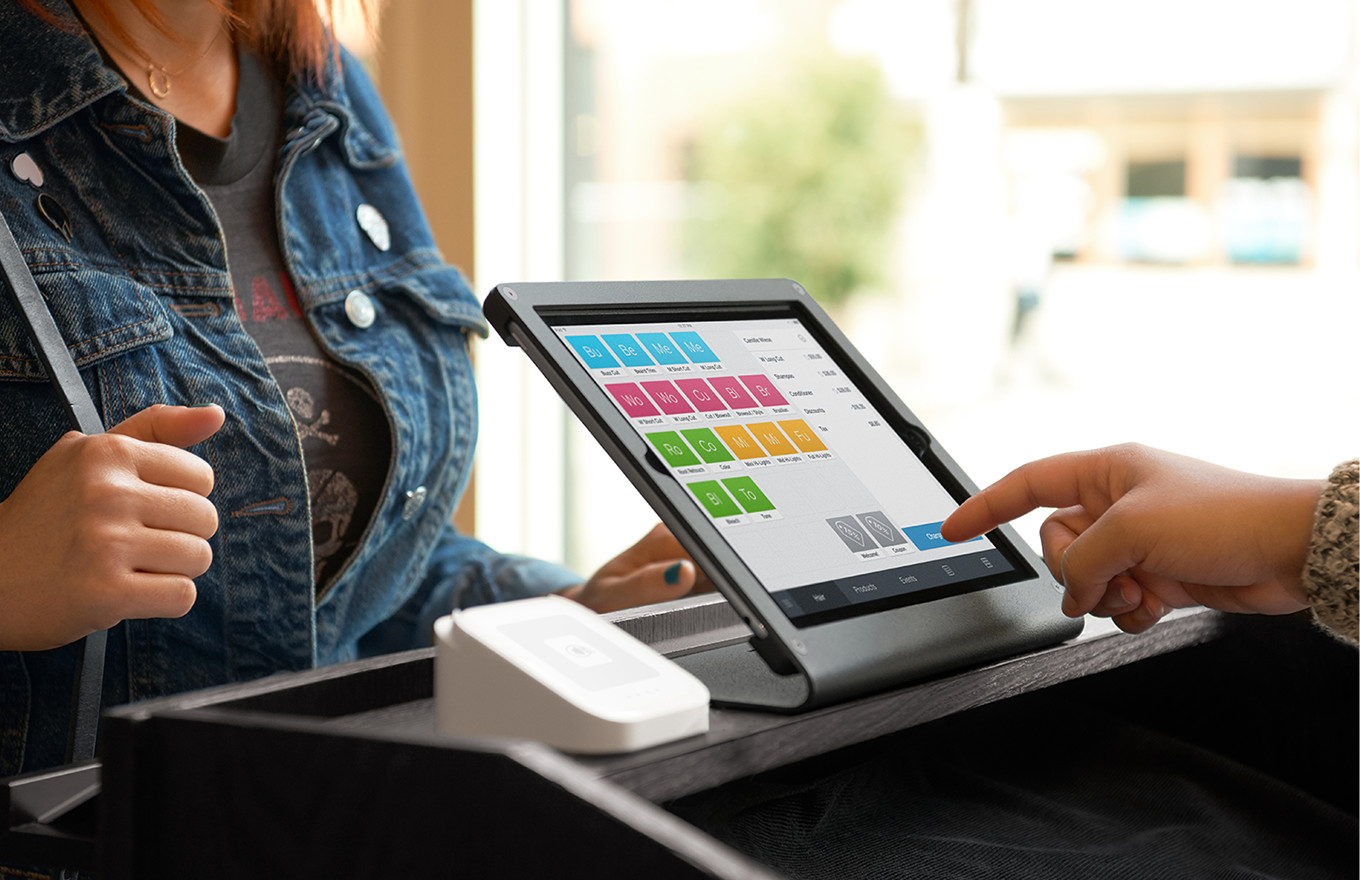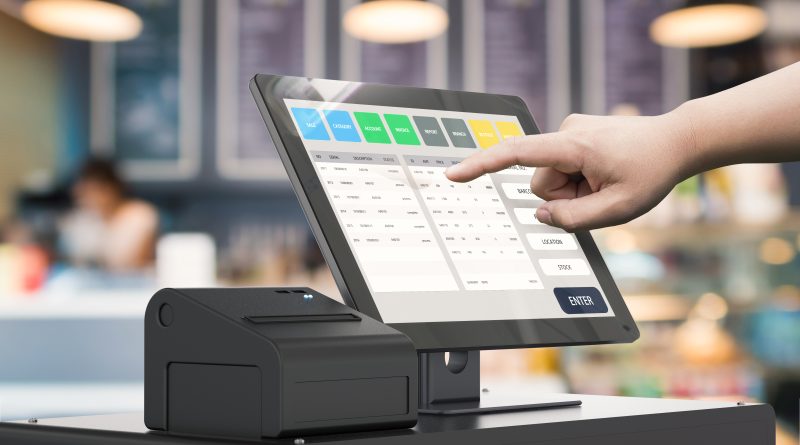Simple POS System: A Sales Management Solution Created To Improve Transactions For Little Enterprises
Features and Advantages
When diving into the world of a Point Of Sales System for small company, it's not simply about calling up sales. What truly sets these systems apart is the abundant tapestry of functions woven into their design, each crafted to elevate the day-to-day grind of a small service owner. Think of a tool that not only tracks sales however also reads the pulse of your stock like a skilled detective. Intriguing, right?
Core Features That Transform Daily Operations
- Stock Management: Gone are the days of frenzied stock checks. Modern POS systems instantly upgrade your inventory, notifying you when products run low. It's as if your system whispers, "Hey, time to reorder!" before you even realize it.
- Sales Reporting: Numbers can be overwhelming, but a good POS system presents sales information in clear, absorbable formats. Charts, graphs, and real-time control panels make it easy to identify trends and make informed decisions.
- Staff member Management: Setting up shifts and tracking hours become smooth. This function not only saves time but lowers human error, a continuous thorn in the side of small service owners juggling lots of hats.
- Customer Relationship Management (CRM): Picture understanding your clients as well as your buddies. POS systems can keep customer choices and purchase history, allowing customized marketing that feels authentic, not forced.
Benefits That Speak With the Heart of Small Company Needs
Why do these features matter? Due to the fact that behind every transaction is a story, and a properly designed POS system assists you inform it better. It's not practically efficiency; it's about empowering you to focus on what truly matters-- your customers and growth.
| Function | Benefit | Effect on Company |
|---|---|---|
| Real-time Stock Updates | Prevents stockouts and overstocking | Improves cash circulation and consumer fulfillment |
| Detailed Sales Analytics | Identifies best-selling products and peak hours | Notifies marketing and staffing methods |
| Integrated Payment Processing | Accelerate checkout and lowers mistakes | Improves consumer experience and builds trust |
| Customer Data Management | Allows targeted promos and commitment programs | Increases repeat business and client retention |
Ever Wondered How This Plays Out in Real Life?
Picture a charming coffee bar owner, managing orders throughout an early morning rush. The POS system not just processes payments quickly however alerts her to a decreasing supply of her signature beans. She reorders flawlessly, preventing a consumer disappointment. Little moments like this, powered by smart technology, become the unrecognized heroes of company success.
Could your little service grow with a tool that feels more like a partner than simply a maker? The ideal Point Of Sales System does not just handle transactions-- it informs the story of your service, opening prospective hidden in daily information.
Exploring the Kinds Of Point Of Sales Systems for Small Organization
Imagine walking into a busy café, the barista juggling orders while the register sings the tune of seamless deals. Behind that harmony lies the choice of a POS system, customized to fit the rhythm of business. What kinds of systems truly empower small businesses to grow? Let's dissect the landscape.
1. Conventional POS Systems
These are the durable old-timers, typically hardware-heavy and locally set up. They boast robust performance but often seem like carrying a typewriter into the digital age. While they provide reliability, their rigidness can trip up organizations craving agility and remote gain access to.
- Pros: Fast processing, offline capability, extensive stock management.
- Cons: Initial hardware financial investment, limited flexibility for scaling or movement.
2. Cloud-Based POS Systems
Think about these as the nimble acrobats of the POS world. Cloud-based systems operate by means of internet, enabling business owners to handle sales and inventory from essentially anywhere. This liberty, however, dances in tandem with dependency on stable internet connections-- a double-edged sword for some.
- Advantages: Real-time updates, scalability, combination with several gadgets.
- Drawbacks: Vulnerability throughout web interruptions, continuous membership charges.
3. Mobile POS Solutions
Have you ever stood in line at a farmer's market, saw a vendor ring up sales on a tablet, and wondered how that magic occurs? Mobile POS systems turn smartphones and tablets into powerful sales tools. They shine in environments where movement and flexibility overshadow the need for large terminals.
- Perfect for pop-ups, food trucks, and little retail stores.
- Integrates with payment gateways and supports fast checkouts.
- Bear in mind: Smaller screen sizes can often restrict sophisticated stock tracking.
4. Self-Service Kiosks
Automation actions in with self-service kiosks, transforming consumer interaction. While more common in larger setups, small companies exploring innovative client engagement might consider scaled-down variations.
- Reduces wait times and releases staff for other tasks.
- Needs thoughtful UX design to avoid user frustration.
| Type | Finest Suited For | Key Feature | Possible Restriction |
|---|---|---|---|
| Standard POS | Established brick-and-mortar shops | Offline deals | Hardware expenses |
| Cloud-Based POS | Organizations needing remote gain access to | Real-time data syncing | Web dependence |
| Mobile POS | Mobile suppliers and pop-ups | Mobility | Minimal screen space |
| Self-Service Kiosks | Customer-centric environments | Automation | Design complexity |
Do you ever wonder why some small companies seem to move effortlessly through their sales process while others stumble over simple jobs? The type of POS system picked often draws the line between smooth sailing and operational headaches. Picking a system without thinking about the specific workflow can lead to missed out on sales or stock mayhem. For instance, a florist juggling seasonal items may discover standard stock modules cumbersome, whereas a cloud-based setup provides vibrant updates and multi-device gain access to.
Pro suggestion: Explore the nuances of integration capabilities. A POS system that syncs with your accounting software application and inventory management can conserve hours of manual labor each week. Keep in mind, the goal is to enhance. If the system feels like a challenge, it most likely is.
Application and Setup
Envision standing in your little store, surrounded by curious customers, while your brand-new Point of Sales System blinks silently on the counter. The thrill of modern-day innovation meets the truth of getting it up and running. However how does one leap from the excitement of purchase to seamless operation?
Establishing a POS system for small company isn't practically plugging in hardware and clicking through software application triggers. It's a detailed dance, where every step should be precise to avoid hiccups that ripple through day-to-day operations.
Key Steps to a Smooth Setup
- Inventory Integration: Before you scan your first item, guarantee your stock database is clean and detailed. Replicate entries or missing SKUs can trigger turmoil throughout transactions.
- Hardware Configuration: Connect peripherals like barcode scanners, invoice printers, and cash drawers carefully. Focus on USB port assignments and motorist installations-- an ignored detail here can stall your workflow.
- User Gain Access To Levels: Define clear functions within the system to prevent unexpected overrides or unauthorized refunds. A well-structured user hierarchy protects your sales information's stability.
- Tax and Pricing Guidelines: Customize tax rates and discount rate structures to reflect regional policies and your marketing strategies. Automated estimations avoid costly manual mistakes.
- Test Transactions: Run several circumstances simulating real sales to determine any problems or bottlenecks. Don't undervalue this step-- it conserves headaches later on.
Specialist Tips for Efficient Execution
- Backup existing sales and stock information before migrating to the new system, simply in case.
- Usage batch import features for stock data; manual input is a dish for errors.
- Consider the workflow from both the cashier's and the customer's viewpoint when arranging your checkout interface.
- Label cable televisions and gadgets during setup to simplify troubleshooting and future upgrades.
- Arrange setup throughout off-hours to prevent interfering with peak business times.
Common Setup Snags to Expect
| Problem | Result | Avoidance |
|---|---|---|
| Inaccurate tax settings | Overcharging or undercharging consumers | Verify local tax codes and update system appropriately |
| Hardware incompatibility | Peripheral devices fail to operate | Check device compatibility before purchase |
| User authorization errors | Unauthorized gain access to or unintentional information removal | Set strict access controls and audit frequently |

Have you ever wondered why some POS setups feel intuitive while others seem to trip you up at every turn? The secret lies in anticipating the hidden snags and crafting your setup with foresight. A well-executed implementation not just accelerates sales however transforms your little business's daily rhythm into a structured symphony.
Security and Compliance Factors To Consider
Picture getting up one morning to find your point of sales system has actually been breached overnight. Client data exposed, transactions compromised, and your small business's track record teetering on the edge. It's a scenario no business owner wants to deal with, yet many ignore the subtle vulnerabilities that prowl in their POS infrastructure.
At the heart of every secure POS system lies encryption. Not just any encryption, but end-to-end file encryption that scrambles cardholder information from the moment it's swiped up until it reaches the payment processor. Without this, sensitive details can fall victim to cyber eavesdroppers or hackers hiding in the network shadows.
Key Security Practices to Strengthen Your POS
- Routine software application updates: Outdated software is like leaving your backdoor broad open. Regular updates patch newly found vulnerabilities that cybercriminals fast to make use of.
- Strong authentication protocols: Usage multi-factor authentication wherever possible. A basic password won't cut it any longer-- layered security is the new norm.
- Network segmentation: Keep your POS system isolated from other organization networks. This separation limits the spread of malware and unapproved gain access to.
Compliance isn't just about ticking boxes-- it's a non-negotiable framework that guarantees you're managing payment information responsibly. The Payment Card Industry Data Security Requirement (PCI DSS) is typically considered as the gold requirement for POS compliance, however small companies often ignore the depth of its requirements.
For example, did you understand that saving cardholder information beyond what's absolutely essential can immediately put you out of compliance? Lots of small company owners unknowingly keep transaction logs with sensitive information for convenience, unintentionally welcoming Easy to Use POS System regulatory scrutiny.
Compliance Checklist for Small Business POS Systems
| Requirement | Why It Matters | Pro Pointer |
|---|---|---|
| Encrypt transmission of cardholder data | Prevents interception during payment processing | Usage TLS 1.2 or higher for safe and secure interaction |
| Preserve a safe network | Blocks unauthorized access efforts | Modification default system passwords instantly after setup |
| Implement access controls | Limitations who can view or process payment information | Appoint role-based permissions tailored to job functions |
| Monitor and test networks regularly | Detects breaches before they become disastrous | Arrange quarterly vulnerability scans and penetration tests |

Ever wondered why some little services get better rapidly after a security scare, while others crumble? The difference lies in proactive steps and understanding the subtle intricacies of point of sale security. Easy actions like disabling unused services on your POS device can drastically lower direct exposure.
Keep in mind that compliance is a moving target. Regulations evolve, cyber threats alter, and what was safe the other day might be outdated tomorrow. Stay curious, stay alert, and never assume your system is too small to be noticed.